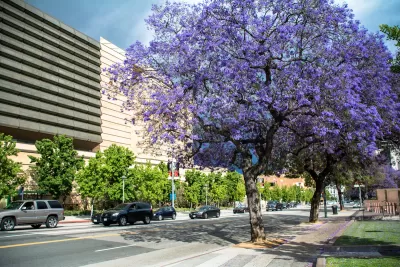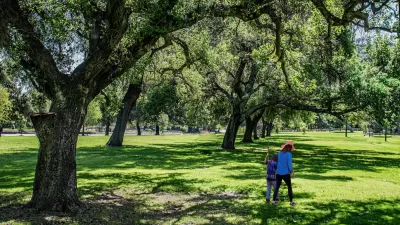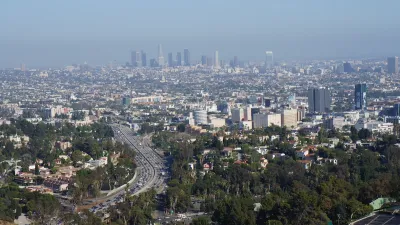A new study highlights the complex challenge of addressing tree canopy disparities in South L.A., where historical environmental injustices, budget constraints, and competing community priorities hinder efforts to increase equitable tree coverage.

A recent study led by the University of Southern California (USC) and the South L.A. Tree Coalition highlights the complex challenge of increasing tree canopy in South Los Angeles, a region that has long faced environmental injustices. The study, “Rooted Connections,” reveals that while community leaders value trees for their cooling effects and public health benefits, they also face competing priorities like homelessness and gentrification, making the lack of trees more than just an environmental issue. With city budget cuts affecting urban forestry efforts, progress toward equitable tree distribution in underserved areas could be delayed.
As reported by Lila Seidman, the study also emphasizes the historical context behind the lack of trees in South L.A., citing discriminatory planning practices that have led to a disproportionate lack of greenery. Areas like South L.A. have tree canopies as low as 5 percent, compared to wealthier neighborhoods with significantly more coverage. Community leaders interviewed in the study pointed out the mental and physical health impacts of heat and the absence of natural spaces, as well as concerns about tree planting being associated with gentrification, signaling the need for intentional and community-led greening efforts.
Despite limited resources, efforts to improve canopy coverage are underway, with the Urban Forestry Division focusing on an equity-based approach to prioritize tree planting in high-need areas. However, achieving this goal requires more than just planting trees—it will necessitate a commitment to maintenance, partnerships with nonprofit groups, and adequate funding to ensure long-term success in addressing both environmental and social justice issues in South Los Angeles.
FULL STORY: ‘There is no easy fix’: Study reveals attitudes about lack of trees in South L.A.

Manufactured Crisis: Losing the Nation’s Largest Source of Unsubsidized Affordable Housing
Manufactured housing communities have long been an affordable housing option for millions of people living in the U.S., but that affordability is disappearing rapidly. How did we get here?

Americans May Be Stuck — But Why?
Americans are moving a lot less than they once did, and that is a problem. While Yoni Applebaum, in his highly-publicized article Stuck, gets the reasons badly wrong, it's still important to ask: why are we moving so much less than before?

Using Old Oil and Gas Wells for Green Energy Storage
Penn State researchers have found that repurposing abandoned oil and gas wells for geothermal-assisted compressed-air energy storage can boost efficiency, reduce environmental risks, and support clean energy and job transitions.

Updating LA’s Tree Rules Could Bring More Shade to Underserved Neighborhoods
A new USC study finds that relaxing Los Angeles’ outdated tree planting guidelines could significantly expand urban tree canopy and reduce shade disparities in lower-income neighborhoods, though infrastructure investments are also needed.

California's Canal Solar Projects Aim to Conserve Resources and Expand Clean Energy
California’s Project Nexus has begun generating electricity from solar panels installed over irrigation canals, with researchers and state agencies exploring statewide expansion to conserve water and boost clean energy production.

HHS Staff Cuts Gut Energy Assistance Program
The full staff of a federal program that distributes heating and cooling assistance for low-income families was laid off, jeopardizing the program’s operations.
Urban Design for Planners 1: Software Tools
This six-course series explores essential urban design concepts using open source software and equips planners with the tools they need to participate fully in the urban design process.
Planning for Universal Design
Learn the tools for implementing Universal Design in planning regulations.
Heyer Gruel & Associates PA
City of Moreno Valley
Institute for Housing and Urban Development Studies (IHS)
City of Grandview
Harvard GSD Executive Education
Salt Lake City
NYU Wagner Graduate School of Public Service
City of Cambridge, Maryland





























